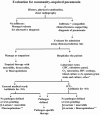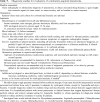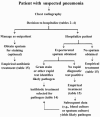Practice guidelines for the management of community-acquired pneumonia in adults. Infectious Diseases Society of America
- PMID: 10987697
- PMCID: PMC7109923
- DOI: 10.1086/313954
Practice guidelines for the management of community-acquired pneumonia in adults. Infectious Diseases Society of America
Figures


















Comment in
-
Guidelines for community-acquired pneumonia: a tale of 2 countries.Clin Infect Dis. 2000 Aug;31(2):422-5. doi: 10.1086/313965. Epub 2000 Sep 7. Clin Infect Dis. 2000. PMID: 10987699 No abstract available.
References
-
- Niederman MS, Bass JB, Campbell GD, et al. Guidelines for the initial empiric therapy of community-acquired pneumonia: proceedings of an American Thoracic Society Consensus Conference. Am Rev Resp Dis. 1993;148:1418–26. - PubMed
-
- British Thoracic Society. Guidelines for the management of community-acquired pneumonia in adults admitted to hospital. Br J Hosp Med. 1993;49:346–50. - PubMed
-
- Bartlett JG, Breiman RF, Mandell LA, File TM., Jr Community-acquired pneumonia in adults: guidelines for management. Infectious Diseases Society of America. Clin Infect Dis. 1998;26:811–38. - PubMed
-
- Gross PA, Barrett TL, Dellinger P, et al. Purpose of quality standards for infectious diseases. Clin Infect Dis. 1994;18:421. - PubMed

